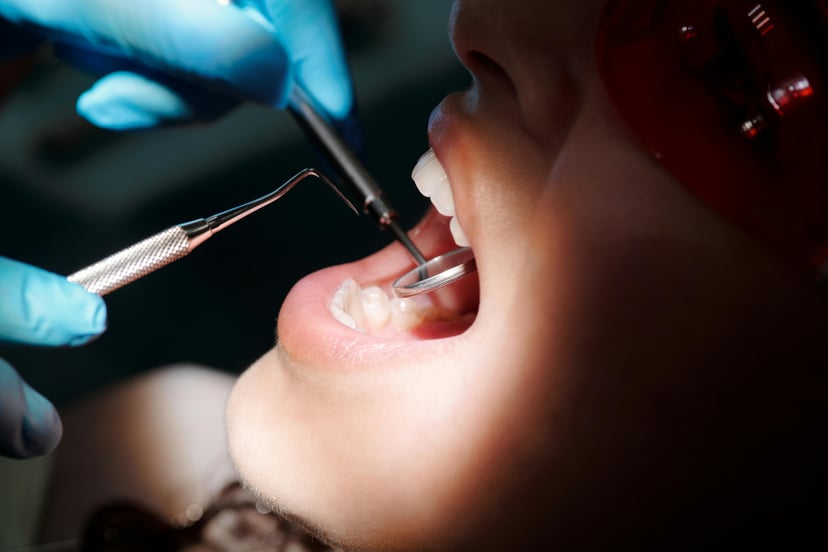What Is Interproximal Reduction (IPR) and When Is It Necessary?
September 4th, 2024
3 min read

Interproximal Reduction (IPR) is a technique frequently used in orthodontic treatments to reduce the friction between crowded teeth that are being straightened and to improve alignment results.
At NYC Smile Design, we believe in providing our patients with comprehensive insights into the treatments we provide. For patients considering or undergoing orthodontic treatment, understanding the tools and techniques available is crucial.
This blog aims to demystify IPR, explaining its common uses in orthodontics, and discussing why and when it is necessary, as well as describing how it can be performed safely and conservatively. IPR is a technique that has a lot of misconceptions and misinformation associated with it. We aim to help patients feel confident about the technique of IPR, when it is needed for their treatment and to ensure our patients make well-informed decisions about their dental health.
Understanding Interproximal Reduction (IPR)
Interproximal Reduction (IPR), is a precise technique utilized in orthodontics to modify the friction between teeth so they may be aligned more efficiently. By carefully and painlessly polishing minute amounts of enamel from the sides of teeth, this method creates additional space in the dental arch, which is essential for smooth, frictionless tooth movement, and alignment and improving overall dental occlusion. Additionally, this procedure is often used in situations of crowding when we do not want to do an extraction to create needed space. It can also be used to adjust the proportions of teeth, enhancing aesthetic outcomes by creating a more balanced and visually pleasing smile.
Dentists may opt for IPR in comprehensive treatment plans, especially when slight, nearly invisible modifications in tooth size can result in significantly better outcomes. Done correctly by experienced clinicians, the technique is carefully performed using specific dental tools that ensure only a minimal amount of enamel is quickly polished off, preserving the integrity of the tooth while making the necessary spatial adjustments. This strategic enamel removal can be critical in achieving the desired orthodontic results with better stability, post-treatment.
Instrumentation used to accomplish IPR includes polishing strips and discs. These instruments provide controlled, careful enamel reshaping and the removal of tenths of a millimeter of enamel between teeth that require smoother, frictionless movement between them. Numbing gels can be used to make you more comfortable.
Concerns You May Have About IPR
When considering Interproximal Reduction (IPR) for orthodontic treatment, you might have some concerns about the procedure.
Misunderstanding About Long-Term Enamel Integrity
One major concern you may have with IPR is the potential impact you may think it has on enamel integrity. Enamel is the tooth's natural protective barrier, and when IPR is done conservatively and correctly, the enamel shape remains almost the same and the enamel integrity is not compromised. Since only tenths of a millimeter are removed, this allows the enamel to continue to protect your tooth from sensitivity and decay.
Preserving Natural Tooth Structure
Our practice firmly believes in preserving as much of the natural tooth structure as possible. This philosophy guides us to opt for the least invasive treatments available. We consider the integrity and health of the entire tooth, striving to avoid procedures that might compromise the tooth’s long-term viability. IPR is a conservative way to gain space and produce frictionless movement during orthodontic treatment. We prefer IPR over extracting teeth to gain space.
How We Minimize the Amount of IPR with Orthodontic Alternatives
We always first explore alternative orthodontic treatments that do not require the removal of enamel, as minute as it may be with IPR when evaluating and developing an orthodontic treatment plan. These alternatives may include the use of orthodontic expanders that increase the arch space or clear aligners that can effectively expand and reposition teeth based on precise treatment planning. These methods are chosen to create space to align teeth effectively and minimize the amount of IPR needed.

Patient Considerations
Understanding patient-specific factors is crucial when considering Interproximal Reduction (IPR) as part of an orthodontic treatment plan.
Assessment Needs for Interproximal Reduction
Deciding whether to implement IPR requires a comprehensive evaluation of each patient's unique dental structure and orthodontic requirements. This assessment must consider various factors, including the degree of crowding, the health of the enamel, and the overall orthodontic goals. Such a personalized approach ensures that IPR is only used when it is truly the most effective option, aligning with the specific alignment needs and long-term dental health of the patient.
Educating and Respecting Patient Preferences
Patient comfort, education, and preferences play a significant role in choosing the right orthodontic treatment. Many patients are concerned about procedures that permanently alter their teeth, like IPR, where there is a minimal amount of enamel removal. Helping patients understand the rationale for IPR while at the same time understanding and respecting their concerns and preferences is essential. This helps ensure that patients are comfortable with and committed to their treatment plans, ultimately leading to better compliance and outcomes.
Conclusion
This discussion of Interproximal Reduction (IPR) outlines what it is, how it's used, and why it may be necessary for you. We encourage patients to fully explore their orthodontic options and discuss their specific needs with their dentist. By understanding the different approaches, the rationale for the IPR procedure, and how it may benefit you, patients can make informed decisions about their treatment plans.
If you're considering orthodontic treatment and are curious about which methods are best for you, schedule a consultation with us. We're here to provide tailored advice and help you achieve the best possible results, ensuring your treatment aligns with your personal dental health goals.
Topics:

